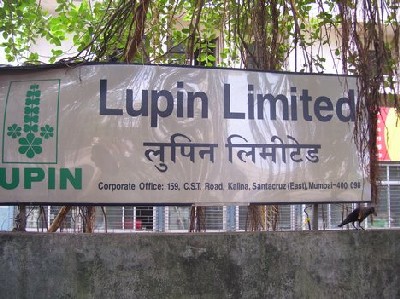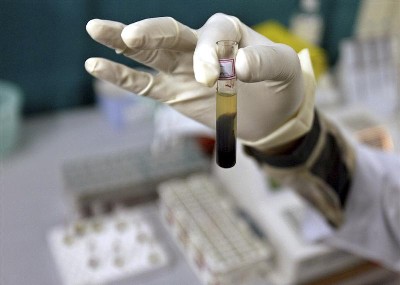 | « Back to article | Print this article |
This is how Lupin cracked the Japanese pharma market
Vinod Dhawan, President -- Asia Pacific, Middle-East, Africa and Latin America, Lupin, had a clear mandate when the domestic pharmaceutical major snatched him from its bigger competitor Ranbaxy eight years ago: to design and execute Lupin's fledgling foray into international markets beyond the United States and Europe.
"In 2004-05, while charting out our international expansion strategy, we had shortlisted four markets -- Japan, Australia, Brazil and Mexico. Japan seemed most promising among all as the government (of that country) was beginning to encourage generics (low-cost versions of original patented medicines). We saw those early signs", Dhawan says.
What Dhawan did for Lupin could be taught as a business school case study in how to enter a new market -- not just one with completely alien cultural norms, but also one that had an entirely different, more rigorous and seemingly impenetrable pharmaceutical market.
For Rediff Realtime News, Click Here
Click NEXT to read more...
This is how Lupin cracked the Japanese pharma market
In eight years, Dhawan has steered Lupin's operations in Japan from zero revenues in 2004 to Rs 621 crore (Rs 6.21 billion) in 2010-11, approximately 11 per cent of its Rs 5,700 crore (Rs 57 billion) turnover for the year making it the biggest Indian player in the country.
None of its domestic peers earn even half this revenue from Japan, a country that is considered to be one of the toughest markets for generics, globally.
How did it go about doing this?
Click NEXT to read more...
This is how Lupin cracked the Japanese pharma market
Lupin's Trojan horse
With Rs 1,000 crore (Rs 10 billion) turnover in 2002-03, Lupin had already made inroads into the active pharmaceutical ingredient or API (drug raw material) supplies in the US and Europe, but was a fringe player in most other markets.
While Dhawan seemed the right man for the job -- after all, he ran Ranbaxy's Asia Pacific and Latin American business since 1998 -- cracking the Japan problem was a challenge at an entirely different scale.
Medicines in Japan have different specifications from other markets. The percentage of residual impurities and the raw material strengths are different from that of US or European requirements and therefore, cannot be clubbed together with those markets.
A year after Dhawan took charge, Lupin revealed the first step in its strategy -- a co-operation agreement with a 50-year old local drug firm Kyowa Pharmaceutical to market medicines in Japan. In effect, Kyowa became Lupin's Trojan horse.
Click NEXT to read more...
This is how Lupin cracked the Japanese pharma market
The agreement turned out to be pivotal. While Lupin had to develop and manufacture the medicine, Kyowa was supposed to conduct regulatory testing, obtain approvals and market the drugs in Japan.
Two years later, Lupin acquired a majority stake in privately-held Kyowa, and in 2008, turned it into a 100 per cent subsidiary. "Kyowa gave us lot of insights into the working of the Japanese generic market. We added new products in the Kyowa pipeline, and in less than three years, doubled its turnover", Dhawan added.
Lupin also claims to have undertaken a number of operational and margin-optimisation measures like price renegotiations, API variations and utility-cost improvements to achieve a seven per cent increase in gross margins since integration.
Click NEXT to read more...
This is how Lupin cracked the Japanese pharma market
Growing the family
Kyowa, under Lupin, has thrived. Today, Kyowa specialises in making tablets and capsules in neurology, cardiovascular, gastroenterology and respiratory segments. It markets over 200 products through its 85 strong sales and marketing team.
It is one of the largest generic players in the neurology segment with 95 products and covers 94 per cent of psychiatry hospitals in Japan. "From an average of three product introductions, Kyowa is now targeting six to seven products every year. From next year onwards, we want it to be in the 10 to 12 range", Dhawan said.
The augmentation of Kyowa's Japanese research and development facilities and its synergetic research with Lupin's R&D centre in Pune (India) helped Kyowa increase its product pipeline, he added.
When Lupin decided to snap up another company, once again, it chose wisely.
Click NEXT to read more...
This is how Lupin cracked the Japanese pharma market
Last month, Kyowa acquired all outstanding shares of I'rom Pharmaceuticals (I'rom), a Tokyo-based company that specialises in making and selling injectables, an area that was missing in Kyowa's business plans.
I'rom has a significant presence in hospitals that are eligible for the DPC (diagnosis-procedure-combination) fixed-rate, re-imbursement scheme from the Japanese government.
The DPC scheme is meant to encourage use of generics and I'rom products enjoy a significant usage in the $11 billion (Rs 56,500 crore) DPC Hospital segment that spans 1,400 hospitals, covering over 35 per cent of all hospital beds in Japan, the company says. I'rom recorded sales revenues of JPY 5,361 million (approximately Rs 360 crore) in 2010-11.
Click NEXT to read more...
This is how Lupin cracked the Japanese pharma market
While Lupin has not disclosed the cost of its acquisitions, a Mumbai-based pharma expert said that both the deals were in the range of $80-100 million, and hence, quite positive for Lupin.
Lupin is also exploring in-licensing arrangements and strategic marketing alliances with various Japanese, European and Indian companies to introduce new products into the Japanese market.
Terming Lupin's Japan strategy as "interesting", Hemant Bakhru of broking firm CLSA said that the company had got their first acquisition right.
"They are yet to share details about their second acquisition and how they intend to make it profitable. But if it works well, Lupin should be able to increase its market share from the current 2.5 per cent to 4 to 5 per cent in the Japan."
Click NEXT to read more...
This is how Lupin cracked the Japanese pharma market
Hurdles
While analysts are positive about Lupin's current performance in Japan, they feel that the synergies between Lupin and its Japanese subsidiaries are taking more time than what was initially expected.
"Sourcing low-cost medicines from India has not worked until now. In the case of Kyowa, Lupin has been saying this since the beginning. The outsourcing was supposed to begin in 2007, but has not happened in those timelines", a stock market analyst with a leading broking firm said.
Dhawan agreed that the future lies in backward integration. "APIs are very expensive in Japan. We are trying to backward integrate our operations and manufacture formulations (final products) in our Japanese facilities by making use of Lupin's APIs.
Click NEXT to read more...
This is how Lupin cracked the Japanese pharma market
We have already received approvals to ship APIs of two such products. More applications are awaiting regulatory approval from Japan's ministry of Health", he said. According to Dhawan, regulatory approvals can take up to two years from the date of application.
The company is also planning a dedicated facility to manufacture the formulations for its medicines.
"To get regulatory approval for the final product is even more difficult. We are planning to have separate facilities in Goa that will exclusively cater to the Japanese market requirements," Dhawan said.
Click NEXT to read more...
This is how Lupin cracked the Japanese pharma market
Competitive heat
Lupin is not the only generic company that is interested in Japan's growing generic market. The world's largest generic drug maker -- Teva of Israel -- has recently announced plans for a big entry into Japan.
Generic heavyweights such as Sandoz already have a presence there. Daiichi Sankyo, a leading Japanese drug maker has serious plans to capitalise on the generic strengths of its Indian subsidiary – Ranbaxy -- to capture a decent chunk of the Japanese generic pie.
Ranjit Kapadia, senior Vice President of Central Broking said that "acquisition" will be the key to doing business in Japan.
Yet, none of the other Indian players have made significant inroads in Japan because, unlike Lupin, they did not focus on acquisitions, Kapadia said.
Click NEXT to read more...
This is how Lupin cracked the Japanese pharma market
Dr Reddy's, Cadila and Intas are among the key Indian players that have expressed strong desire to make a presence in the Japanese generic market.
Dhawan said that competition will not spoil their growth chances in Japan. "Unlike the US or European markets where patent expiry of a product leads to free fall in prices, Japan offers a premium for generics.
Despite a price cut every two year, one can expect 70 per cent of the price of the original drug for an early generic alternative. Even if we consider a 5 to 6 per cent price cut every two years, the market remains attractive", he explained.
Click NEXT to read more...
This is how Lupin cracked the Japanese pharma market
Kapadia estimates that with I'rom revenues, Lupin will find its Japanese business contributing at least 15 per cent (up from 11 per cent) to its consolidated revenues next fiscal.
Lupin's Japan venture has been so successful Dhawan feels that it can be replicated in the other focus areas of Lupin.
"We have acquired a range of products in Australia in September, 2011. Significant expansion of product portfolio is underway. It will take a year or two to consolidate", Dhawan said. He also disclosed that the company is actively pursuing acquisition opportunities in Brazil and Mexico.
Not bad for a company with zero presence in Japan not so long ago.











